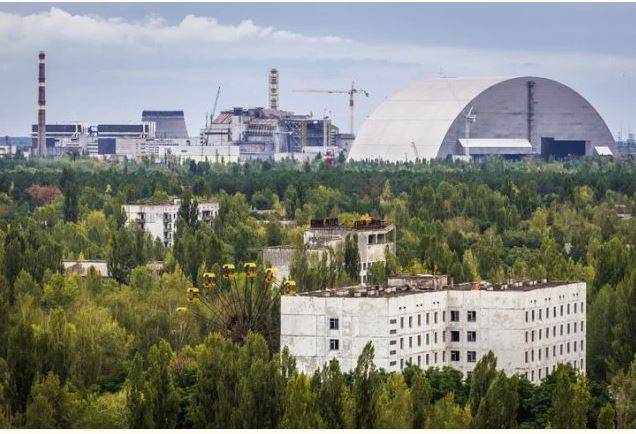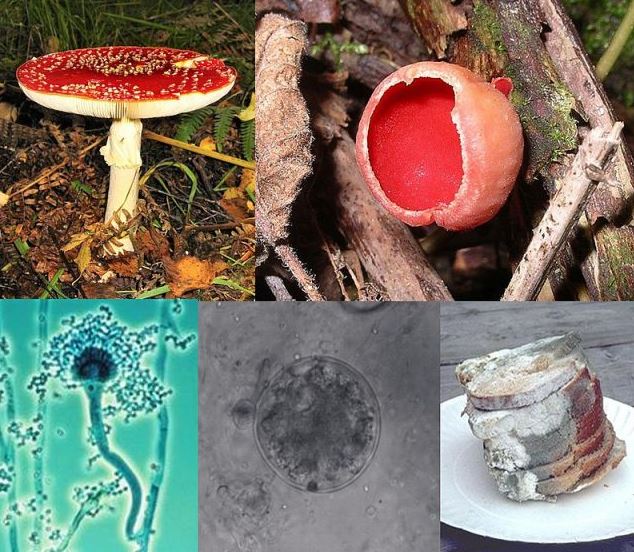 4
4

Examining the pyramid with the mions
 19. 04. 2024
19. 04. 2024



 4
4

 19. 04. 2024
19. 04. 2024

 1
1

 17. 04. 2024
17. 04. 2024
 6
6

 16. 04. 2024
16. 04. 2024
 02. 03. 2020
02. 03. 2020

The walls of Chernobyl are covered with a strange fungus that actually feeds and reproduces thanks to radiation. In 1986, routine reactor testing was carried out at the Chernobyl nuclear power plant when something terrible happened. During the event described as the worst nuclear accident in history, two explosions blew up the roof of one of the power plant's reactors and the whole area and its surroundings were hit by huge amounts of radiation, which made the place unsuitable for human life.
Five years after the disaster, the walls of the Chernobyl reactor began to be covered with unusual sponges. Scientists were quite confused by how the fungus could survive in an area so heavily contaminated with radiation. In the end, they found out that this fungus not only can survive the radioactive environment, but also seems to thrive very well in it.

The forbidden area of the Chernobyl nuclear power plant, also known as the Exclusion Zone around the Chernobyl nuclear reactor, proclaimed by the USSR shortly after the 1986 catastrophe.
According to Fox News, it took scientists another ten years to test the fungus that it was rich in melanin, the same pigment found in human skin and helping to protect it from ultraviolet sunlight. The presence of melanin in fungi allows them to absorb radiation and convert it into another type of energy, which they can then use to grow.

Inside the Chernobyl nuclear reactor.
This is not the first time that such radiation-consuming fungi have been reported. Fungal spores with a high melanin content were discovered in early Cretaceous deposits, a period when the Earth was hit by "magnetic zero" and lost much of its protection from cosmic rays, according to Ekaterina Dadachova, a nuclear chemist at Albert Einstein College of Medicine. in New York. Together with a microbiologist from the same university, Arthur Casadevall, they published research on fungi in 2007.

Abandoned interior of Chernobyl music school.
According to an article in Scientific American, they analyzed three different types of fungi. Based on their work, they concluded that species that contained melanin were able to absorb a large amount of energy from ionizing radiation and then convert it and use it for growth. It is a process similar to photosynthesis.

Different kinds of mushrooms.
The team observed that radiation changed the shape of melanin molecules at the electron level, and that fungi that had a natural layer of melanin and lacked other nutrients actually performed better in high-radiation environments. If fungi could be supported in the growth of the melanin shell, they would be better off in environments with higher levels of radiation than spores that do not have melanin.
Melanin works by absorbing energy and helping to dissipate it as quickly as possible. That's what it does in our skin - it distributes ultraviolet radiation from the sun to minimize its harmful impact on the body. Its function in fungi is described by the team as an energy transformer that attenuates energy from radiation so that the fungus can use it efficiently.
Since the fact that melanin offers protection against UV radiation was already known, it does not seem like a huge step to accept the idea that it would be affected by ionizing radiation. However, other scientists immediately disagreed, arguing that the results of the study could be exaggerated because the melanin-deficient fungi tested could not thrive in higher radiation environments. According to skeptics, this is not clear evidence that melanin would help stimulate growth under these conditions.
Melanized mushroom varieties have also been found in Fukushima and other high-radiation environments, in the Antarctic mountains, and even on the space station. If all of these varieties are also radiotropic, this suggests that melanin may in fact act as chlorophyll and other energy-absorbing pigments. Further research will be needed to determine whether, in addition to the ability to help clean up radioactive areas, there are other practical uses for the Chernobyl sponge.